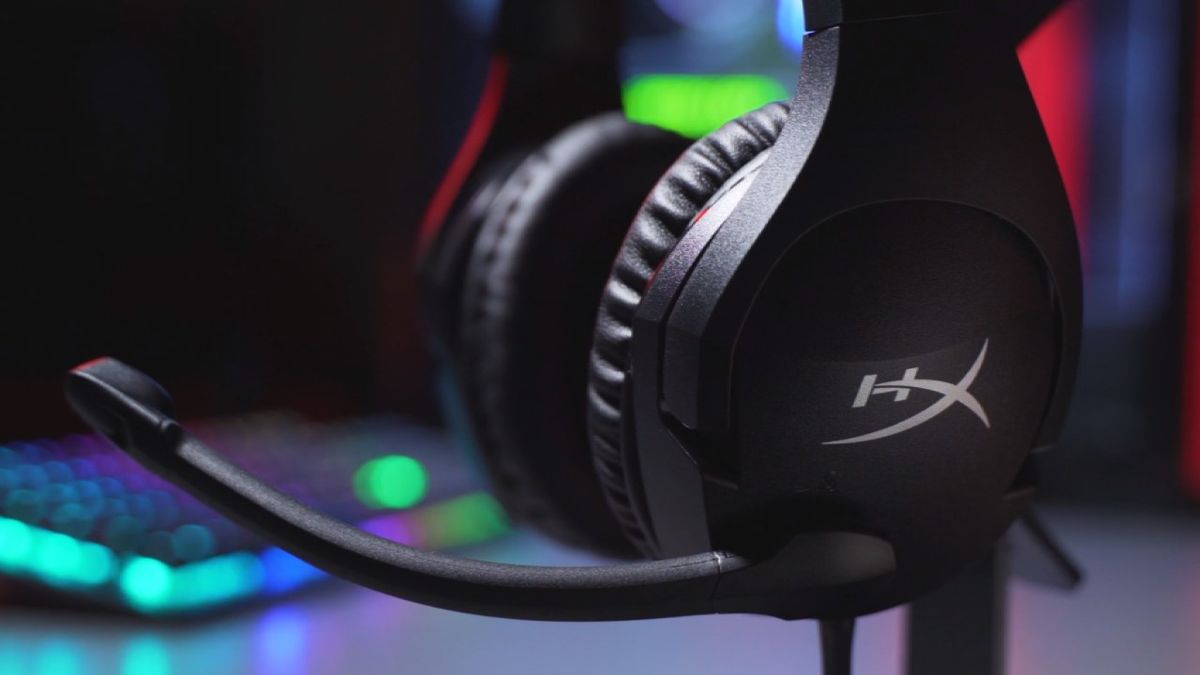12DOVE Verdict
It's not offensively bad, but for the price you can get much better headsets from other brands. This does the job but wait for a sale, if you must pick it up.
Pros
- +
Comfortable padded earcups
- +
Balanced sound profile
- +
Solid boom microphone
- +
Sensible price
Cons
- -
Lacks customisation options
- -
Plastic exterior feels cheap
Why you can trust 12DOVE
Following the trend of previous headsets, HyperX now has a third entry in the Cloud Stinger gaming headset range: the Cloud Stinger S. At first glance, it's nothing super exciting; a wired HyperX headset with a hinged boom mic and leatherette ear cups. At $60 / £60 it's not the cheapest headset on the market, but it won't break the bank either.
The key draw here is the virtual 7.1 surround sound provided by HyperX's Ngenuity software. The Stinger S promises true three-dimensional audio designed for gaming, allowing you to pinpoint your enemies' positions with your ears as well as your eyes. But is it successful?
Features
It absolutely is successful. The virtual surround sound is genuinely fantastic, matching more costly headsets in terms of baseline performance. Ngenuity is a somewhat fiddly and limited piece of software (it doesn't allow as much audio customisation as we'd like) but it's worth it for the 7.1 surround sound alone.
The 50mm neodymium drivers deliver a rich, balanced soundscape, with impressive bass given the Stinger S's lightweight frame. The earcups are memory foam wrapped in a soft leatherette for maximum comfort.
The microphone doesn't appear to be anything special upon first inspection, but it's actually a sophisticated little piece of tech. Folding the rigid boom arm up mutes the mic automatically, and it also packs noise-cancelling technology to help eliminate background sounds like keyboard clatter. Beyond this, the Stinger S is somewhat feature-light, but within this price range we don't really expect a killer unique selling point.
Design
Visually, there's nothing beyond the ordinary here. The exterior casing has a simple matte black finish, with the HyperX logo emblazoned on each earcup in white. It connects via a basic non-detachable 2.5m cable with a standard 3.5mm headphone jack. There's no Razer headset style RGB lighting or coloured trim on display with the Stinger S, which should please those who prefer a more minimalistic headset.
In addition to the padded earcups, the headband has a similar leatherette padding along the top. It's adjustable on both sides up to 35mm, and the earcups can be rotated up to ninety degrees, allowing the headset to lie flat for storage or around your neck between matches. A simple plastic slider with a textured finish on the right-hand side provides on-the-fly volume control.
At 275g, the Stinger S isn't the most lightweight headset we've seen, but it's certainly not too heavy. In order to keep the weight down, the outer casing is entirely plastic, with steel sliders in the headband for adjusting the fit. Although it doesn't feel flimsy, it definitely lacks the refined build quality of HyperX's more expensive headsets, and we'd be afraid of damaging the Stinger S should we drop or knock it.
Performance
For extended gaming sessions, the Cloud Stinger S is great. The leatherette padding on the earcups is surprisingly breathable, preventing sweaty heads during sweaty online games. The cable is long enough to allow for good mobility, and with a little height adjustment, the Stinger S sits very comfortably over the head.
In practice, the microphone didn't blow us away, but the noise-cancelling tech worked as advertised and audio input was clear and crisp, ideal for barking commands in multiplayer games. Microphone audio does come across relatively quiet even at higher sensitivities, so we'd advise getting a dedicated mic (like a contender for best microphone for streaming) if you're going to be streaming or recording audio using the Stinger S as your go-to headset.
The headset speaker sound, on the other hand, is amazing. The bassy kick of grenades and shotgun blasts in Call of Duty: Warzone feels incredible, and the audio clarity is good enough for you to easily pick up enemy footsteps with the help of the virtual surround sound. The audio range on show here beats out most cheaper competitors with little effort. It's no slouch when it comes to playing music either, although serious audiophiles will likely want to look elsewhere at the best headphones. For a casual Spotify binge while cracking out some work on your PC, it does the job well.
The physical controls are functional, if not particularly impressive. Flipping the mic up to mute it works well, although a dedicated mute button would've been nice too. The volume slider matches the casing with a somewhat cheap, loose feel to it, meaning that it's quite easy to accidentally max or mute your audio while adjusting the headset.
Overall
Any complaints we have about the Cloud Stinger S really feel quite minor, though, petty, even. At a fundamental level, it's a good headset for any gamer; comfortable, effective, and not overpriced. HyperX is a trusted brand when it comes to audio peripherals, and it's evident after a few lengthy sessions that this headset is very much cut from the same cloth, showing exactly why they make some of the best gaming headsets going.
There are cheaper gaming headsets offering 7.1 surround sound, but fortunately that's not all the Stinger S brings to the table. An effective noise-cancelling mic and HyperX's signature comfort features round the package off nicely, making this headset well worth the sixty-pound asking price. If you want a PC headset for gaming that's good but not overcomplicated, the Cloud Stinger S could be right up your alley.
Christian is a writer for Maximum PC, but also writes in a freelance capacity for a number of other sites including GamesRadar, PC Gamer, and TechRadar. He knows the PC gaming space inside out, particularly when it comes to hardware including PC builds, keyboards, and other peripherals.

Robert De Niro's new Netflix series is being called everything from "addictive" to "dull" as it debuts to mixed reviews and a low Rotten Tomatoes score

The Monkey's Tatiana Maslany reacts to the horror movie's most shocking death: "It's so wrong, and I think that's why it's so right"

Cobra Kai creator reveals a major cut finale moment – and it involves one of the Netflix series' big unanswered questions
Most Popular




